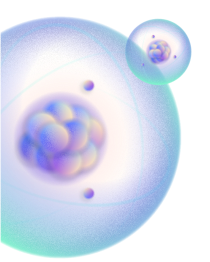Richard Feynman, the famed theoretical physicist and Nobel Laureate in Physics, once said, “It doesn't matter how beautiful your theory is. If it doesn't agree with experiment, it's wrong.”
Although some theoreticians get by with a blackboard and a piece of chalk, experimental physicists typically need a bit more. Such as large-scale neutron scattering facilities, which enable real-time investigations in a variety of experimental environments. These, allow researchers to explore new scientific territory which would be impossible using conventional methods.
This kind of cutting-edge equipment doesn’t grow on trees. Prof. Wang Xunli, who specialises in the study of advanced alloys with neutron scattering, met that challenge by arranging for members of his research group to visit leading neutron scattering facilities in the United States, Europe, Australia and Japan on a regular basis. However, for the last two and a half years, the COVID-19 pandemic made this approach impractical.
Following the recent relaxation of travel restrictions, five members of the group were able to visit the Japan Proton Accelerator Research Complex (J-PARC) in June 2022. They included Dr. Naeem Muhammad, a Postdoc Research Fellow, and three PhD students –Mr. Fan Ziyang, Miss Ma Yuemin and Miss Dong Weixia – who joined Prof. Wang to conduct experiments at J-PARC.
J-PARC is a spallation neutron source located in the picturesque village of Tokai, in Japan’s Ibaraki prefecture, northeast of Tokyo. Its Material and Life Science Experimental Facility houses twenty state-of-the-art neutron beamlines.
The trip marked the first time that the three students, all in the early stages of their PhD studies, had visited a neutron source. The fact that it was also summer in Japan, made the visit all the more pleasant and productive.
The primary goal of the trip was to conduct low-temperature deformation experiments on a variety high-entropy alloys. In addition to providing an opportunity for the students to gain hands-on experience and engage in face-to-face discussions with beamline scientists, it also allowed them to understand the capabilities of different beamlines at J-PARC.
The students found the visit an inspiring experience that offered invaluable insight into the essentials of a research career. They gaining a deeper understanding of their field of research, found new ways to analyse data more efficiently, and learned what to focus on in their academic output.
The experiments ran continuously for a week, and the team spent several nights at the facility. One of the favourite aspects of the entire visit was the fleet of bicycles that J-PARC uses for environmentally friendly commuting to nearby accommodations. Everyone enjoyed riding on the tree-lined roads and breathing the fresh air. They also appreciated the welcoming nature of local people and the delicious food on offer in the village.
However, the most satisfying thing was undoubtedly the experiments, which were completed successfully. The team brought back masses of research data, and they have high hopes of breaking new ground when it is eventually processed.
Photo captions:
- The CityU team visits the Takumi beamline at J-PARC. From left-to-right: Prof. Wang Xunli, Prof. Otomo Toshiya (Director of the J-PARC Material and Life Science Experimental Facility), Miss Dong Weixia, Miss Ma Yuemin, Mr. Fan Ziyang, Dr. Naeem Muhammad and one of the facility’s beamline scientists, Dr. Harjo Stefanus.
-
While the experiments at the Takumi beamline were running, the research team immersed itself in evaluating the data.
-
Students on their way to the experimental facility. Cycling is an essential skill for experimenters at J-PARC.
31 Oct 2022




